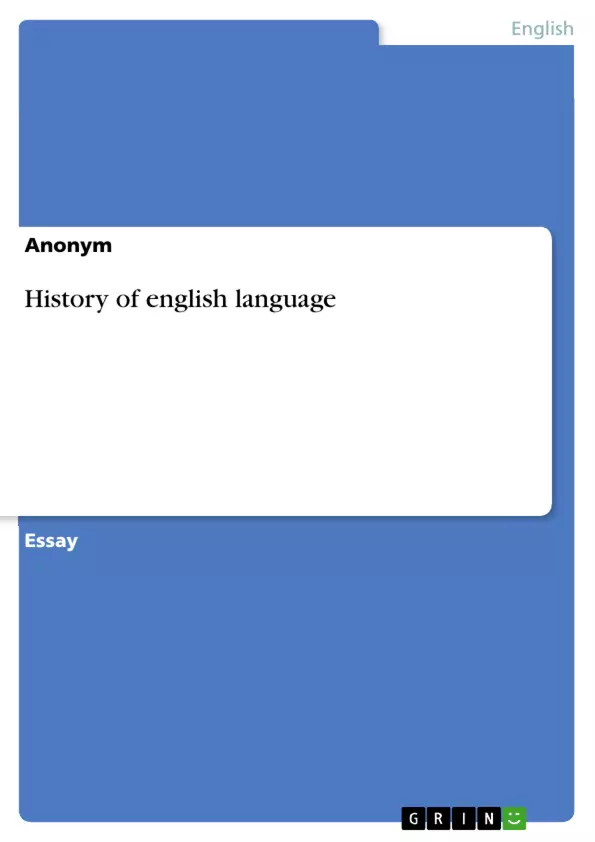This essay seeks to point out in how far the external factor of language contact with Old Norse (ON) and Norman French has affected and contributed to the English language throughout its development. It will thus be explained when and why these languages came in contact with the earliest known form of English, namely Old English (OE) to serve as a basis for demonstrating to what extent lexicon, phonology, orthography, syntax and place-names of English have been influenced by which of the two languages.
The English language as we know it today exists in the way it does due to various contacts with other languages of which most are still evident in specific elements of the modern language. Essentially, there are two kinds of forces driving language change. Two major external forces that have shaped the English language are the Viking Invasion in 787 during the late Old English Period and the Norman Conquest in 1066, inducing the Middle English Period.
Table of Contents
- To what extent has language contact affected the English language?
- Introduction
- Old Norse Influence
- Lexicon
- Phonology
- Syntax and Morphology
- Place-Names
- Norman French Influence
- Lexicon
- Orthography
- Place-Names
- Conclusion
Objectives and Key Themes
This essay explores the impact of language contact with Old Norse and Norman French on the development of the English language. It examines how these external forces have shaped specific features of English, including vocabulary, pronunciation, grammar, and place-names. The essay aims to demonstrate the extent and nature of influence from each language.
- The influence of Old Norse and Norman French on the English language
- Specific areas of language affected by language contact, such as lexicon, phonology, syntax, morphology, and place-names
- The historical context of language contact and its impact on the development of English
- Examples of loanwords and grammatical structures borrowed from Old Norse and Norman French
- The role of social factors in language change and borrowing
Chapter Summaries
The essay begins by outlining the historical context of language contact with Old Norse, tracing its influence back to the Viking invasions of England. It then examines the specific areas of language that have been affected, including lexicon, phonology, syntax, morphology, and place-names, providing examples of loanwords and grammatical structures borrowed from Old Norse. The essay then turns to the influence of Norman French, beginning with the Norman Conquest and its impact on the English language. It examines how the language of the upper class and the court has affected the English lexicon and orthography, while also discussing the influence on place-names. The essay concludes by summarizing the key findings and emphasizing the significant role of language contact in the development of the English language.
Keywords
The essay focuses on language contact, specifically the influence of Old Norse and Norman French on the English language. Key areas of analysis include lexicon, phonology, syntax, morphology, and place-names. It explores the historical context of language contact and the social factors that contribute to language change and borrowing.
- Quote paper
- Anonym (Author), 2018, History of english language, Munich, GRIN Verlag, https://www.grin.com/document/991074




